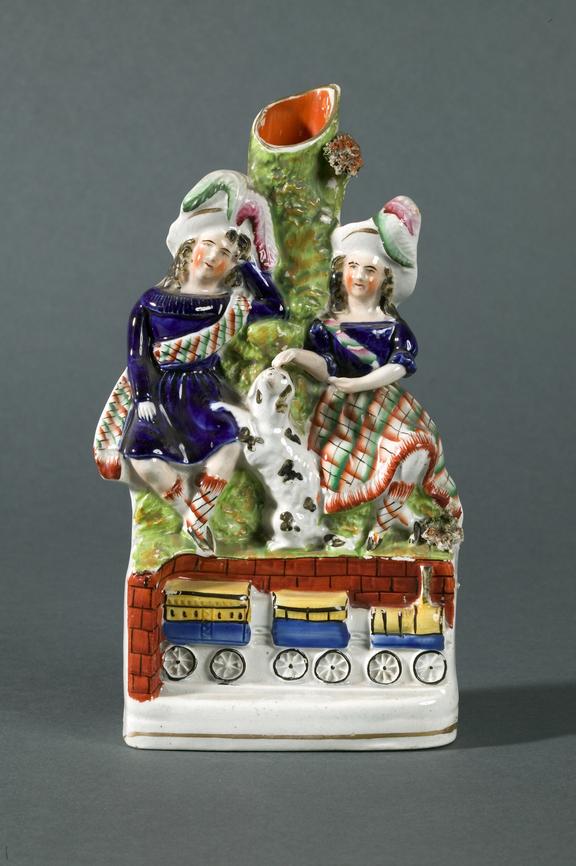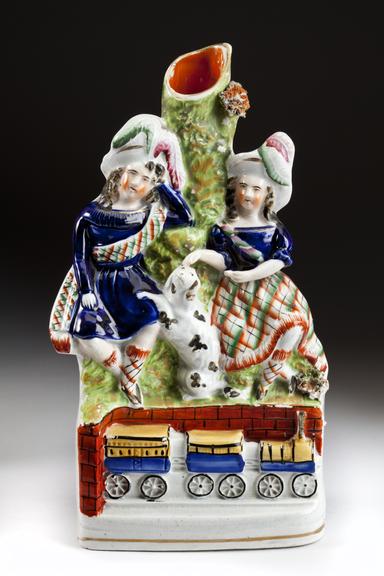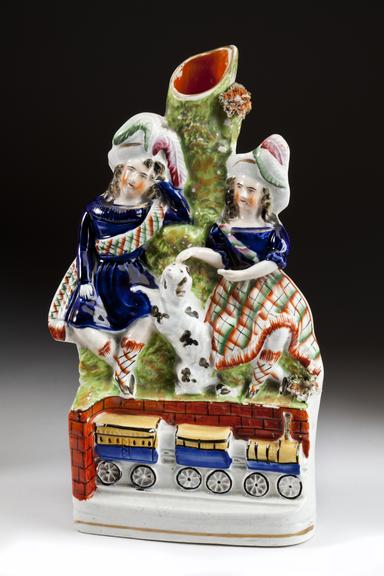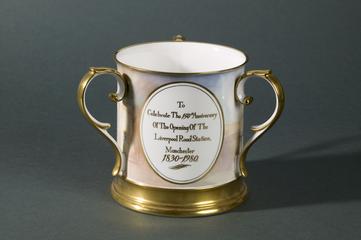
Staffordshire porcelain spill vase
- Made:
- 19th century in Stafford






19th century Staffordshire porcelain spill vase commemorating the Rocket locomotive.
This colourful ornamental spill vase shows a stylised scene in the popular Staffordshire pottery style. It gives an insight into the artistic tastes of the time and shows the extent to which the invention of the railways penetrated contemporary culture.
Two rosy cheeked dancers in Scottish style outfits, a dog in between them, are depicted in glazed ceramic. Robert Stephenson’s famous yellow locomotive engine Rocket pulling a tender and a closed carriage are in the lower section of the spill vase.
In 1829 Stephenson’s Rocket won the Rainhill Trials, a competition to decide on the best motive power for the new Liverpool and Manchester Railway. The railway connected industrial Manchester with the port city of Liverpool. It was the world's first steam powered, inter-urban railway designed to transport both passengers and goods. Rocket was the only locomotive to successfully complete the trials, averaging 12 mph and achieving a top speed of 30 mph.
Many souvenirs were produced to commemorate and celebrate this pioneering locomotive and the opening of the Liverpool and Manchester Railway, including jugs, mugs, printed handkerchiefs and medallions. This spill vase was probably made in Staffordshire in around 1840, twenty or so years after Rocket won the Rainhill trials.
Details
- Category:
- Liverpool & Manchester Railway
- Object Number:
- 2017-2015
- Materials:
- porcelain
- type:
- porcelain spill vase
- credit:
- Graham Ellis




